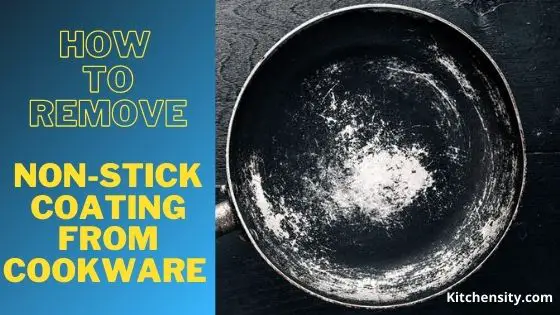Choosing the right cookware can significantly impact your cooking experience. With lots of options available, it can take time to determine which type of pan best suits your needs. Two popular choices that have gained attention recently are titanium coating and ceramic coating pans. Both offer unique features and benefits that cater to different cooking styles.
In this article, we will compare titanium coating vs ceramic coating pans, helping you make an informed decision based on your preferences and cooking requirements. Whether you’re an aspiring chef or a home cook, understanding the differences between these coatings will guide you toward selecting the perfect pan for your culinary adventures.
Table of Contents
- 1 Titanium Coating Vs Ceramic Coating Pan – Quick Comparison
- 2 What Is A Titanium Coating Pan?
- 3 What Is A Ceramic Coating Pan?
- 4 Comparison Between Titanium Coating And Ceramic Coating Pans
- 5 Comparison Chart – Titanium Coating Vs Ceramic Coating Pan
- 6 Do Titanium Pans Need To Be Seasoned?
- 7 Which Is Better Titanium Or Ceramic Cookware?
- 8 Textured Titanium Vs Ceramic Cookware
- 9 Titanium Vs Mineralia Coating
- 10 Is Ceramic Coating Safe?
- 11 Are Titanium Pans Safe?
- 12 Final Thoughts: Titanium Coating Vs Ceramic Coating Pans
- 13 Frequently Asked Questions (FAQs)
- 13.1 Why Use Titanium Instead Of Stainless Steel?
- 13.2 Are Titanium-Coated Pans Completely Scratch-Resistant?
- 13.3 Can Ceramic-Coated Pans Be Used On Induction Cooktops?
- 13.4 How Should I Clean A Titanium-Coated Pan?
- 13.5 Can Ceramic-Coated Pans Handle High-Heat Cooking?
- 13.6 Difference Between Titanium And Ceramic
Titanium Coating Vs Ceramic Coating Pan – Quick Comparison
When comparing titanium coating and ceramic coating in pans, titanium offers exceptional durability and scratch resistance, making it suitable for high-temperature cooking and long-term use. On the other hand, ceramic coatings provide excellent non-stick properties and are generally easier to clean, but they may not be as durable as titanium coatings.
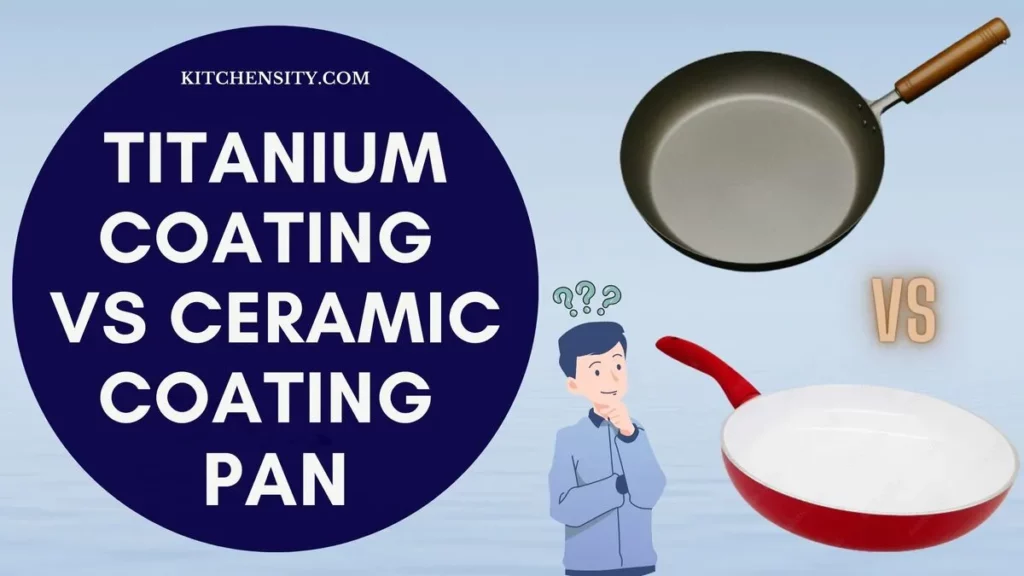
Your choice between the two coatings should depend on your cooking style, preference for non-stick properties, and the level of maintenance you’re willing to undertake for your cookware.
Here’s a brief comparison table for titanium coating vs. ceramic coating in pans:
| Feature | Titanium Coating | Ceramic Coating |
| Durability | Highly durable, scratch-resistant | Less durable, prone to chipping |
| Non-stick Properties | Less non-stick than ceramic | Offers excellent non-stick |
| Heat Distribution | Even heat distribution | Good heat distribution |
| Maintenance | Requires careful cleaning to maintain | Generally easy to clean |
| Recommended for | High-temperature cooking, long-term use | Everyday cooking, easy cleaning |
Read below for a detailed comparison.
Also Read – Copper Vs Titanium Cookware
What Is A Titanium Coating Pan?
A titanium coating pan is a type of cookware that has been treated with a layer of titanium-based non-stick coating. This coating is applied to the surface of the pan to provide non-stick properties, making it easier to cook with and clean. Titanium coating is known for its durability and scratch resistance, making it suitable for high-temperature cooking and long-term use.
However, it’s important to note that the term “titanium coating” can sometimes refer to a coating that contains titanium particles rather than being purely made of titanium, so the specific properties can vary depending on the composition of the coating.
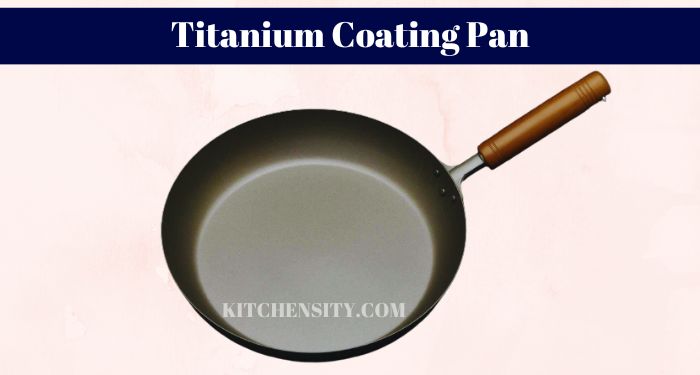
Advantages (Pros) Of Titanium Coating
- Enhanced Non-Stick Properties: Titanium coating offers exceptional non-stick capabilities, allowing you to cook with minimal oil or fat. This feature promotes healthier cooking and makes it easier to release food from the pan without sticking or burning.
- Durability: Titanium coating is highly renowned for its remarkable durability. It can withstand regular use, high temperatures, and frequent cleaning without wearing off or losing its non-stick properties. This longevity ensures that your titanium-coated pan will remain in excellent condition for an extended period.
- Heat Conductivity: Titanium-coated pans are known for their excellent heat conductivity. They distribute heat evenly across the cooking surface, eliminating hot spots and ensuring your food cooks consistently. This feature is particularly beneficial for dishes that require precise temperature control.
- Easy Cleaning: The non-stick properties of titanium coating make cleaning a breeze. Food residues slide off effortlessly, and in most cases, a simple rinse with warm soapy water is sufficient to remove any remaining debris. This easy cleaning process saves you time and effort in the kitchen.
- Versatility: Titanium-coated pans are versatile and compatible with various cooktops, including gas, electric, and induction stoves. This flexibility allows you to use the pan on different heat sources without any concerns about damaging the coating.
- Scratch Resistance: While no coating is entirely scratch-proof, titanium coating is highly resistant to scratches. This quality ensures that your pan can withstand the use of metal utensils, providing convenience and peace of mind during cooking.
- Uniform Browning: Titanium-coated pans promote even browning of food, giving your dishes an appealing appearance. Whether you’re searing meats or sautéing vegetables, the consistent heat distribution of the pan helps achieve the desired color and texture.
- Food Release: Thanks to the excellent non-stick properties, titanium-coated pans offer effortless food release. You can easily flip, toss, or slide food without it sticking to the pan’s surface, making cooking and plating a seamless process.
- Health-Conscious Cooking: With titanium-coated pans, you can minimize the use of oils or fats in your cooking. The non-stick surface allows you to cook with less or no added fats, resulting in healthier meals that are lower in calories.
- Aesthetics: Titanium-coated pans often come in sleek and modern designs, adding a touch of style to your kitchen. Whether you prefer a classic look or a vibrant color, you can find titanium-coated pans that complement your kitchen decor.
Also Read – Hard Anodized Vs Titanium Cookware
Disadvantages (Cons) Of Titanium Coating
- Price: One of the main limitations of titanium-coated pans is their higher price compared to other types of cookware. The cost of the titanium material used in the coating contributes to the overall expense of these pans. If you have a limited budget, investing in titanium-coated pans may not be the most economical option.
- Not Entirely Scratch-Resistant: While titanium coating is highly scratch-resistant, it is important to note that it is not entirely immune to scratches. Although it can withstand the use of metal utensils better than some other coatings, it is still recommended to use utensils made of non-metal materials to prolong the life of the coating.
- Limited Color Options: Unlike ceramic or other types of coatings, titanium coating tends to have limited color options. If you prefer a wide range of colors to match your kitchen decor or personal preferences, you may find the choices for titanium-coated pans somewhat limited.
- Reactivity With Acidic Foods: Titanium-coated pans may not be the best choice for cooking highly acidic foods, such as tomato-based sauces or citrus-infused dishes. The reactivity of titanium with acidic ingredients can cause a metallic taste to leach into the food, affecting its flavor. It is advisable to use alternative cookware for recipes that involve prolonged contact with acidic ingredients.
- Heat Distribution Limitations: While titanium coating provides good heat conductivity, it may not distribute heat as evenly as some other coatings. This can result in slight variations in cooking temperatures across the pan’s surface, requiring you to adjust heat settings or rotate the food for consistent cooking.
- Limited Availability: Titanium-coated pans may be less readily available compared to pans with other types of coatings. They might not be as commonly found in local stores, and you may need to explore specialty cookware shops or online platforms to find a suitable range of options.
- Maintenance Requirements: While titanium coating is generally easy to clean, it does require specific care to maintain its performance and longevity. It is important to follow the manufacturer’s instructions regarding cleaning, as certain harsh or abrasive cleaning agents can damage the coating.
- Weight: Titanium-coated pans can be heavier compared to pans made from other materials. This weight can make them less suitable for individuals who prefer lightweight cookware or have physical limitations that make heavy pans difficult to handle.
It’s crucial to consider these limitations alongside the benefits when deciding whether titanium-coated pans are the right choice for your cooking needs.
Also Read – Hard-Anodized Vs Stainless Steel Cookware
What Is A Ceramic Coating Pan?
A ceramic coating pan is a type of cookware that has been coated with a layer of ceramic-based material to provide non-stick properties. This coating is typically applied to the surface of the pan to prevent food from sticking during cooking and to make cleaning easier. Ceramic coatings are known for their non-stick capabilities and are generally considered safe for cooking, as they do not contain PTFE or PFOA.
However, ceramic coatings may not be as durable as other types of coatings, so they may require more careful handling to prevent scratching or chipping.
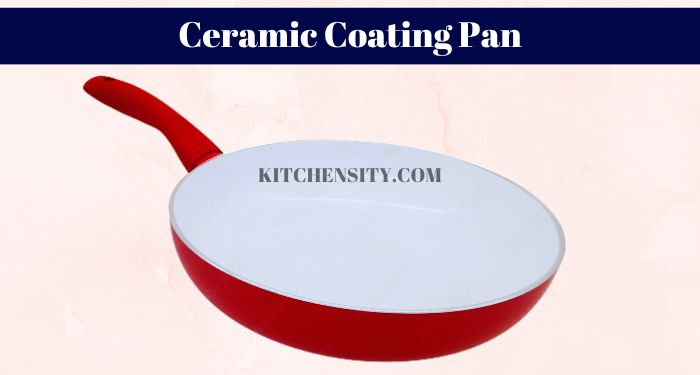
Advantages (Pros) Of Ceramic Coating
- Non-Toxic And Eco-Friendly: One of the significant advantages of ceramic coating is its non-toxic nature. Unlike traditional non-stick coatings that may contain harmful chemicals like PFOA and PTFE, ceramic coating is free from these substances, making it a safer option for cooking. It provides peace of mind, knowing that you are not exposing yourself or your family to potentially harmful compounds.
- Excellent Non-Stick Properties: Ceramic-coated pans offer exceptional non-stick capabilities. The smooth ceramic surface prevents food from sticking, reducing the need for excessive oil or butter during cooking. This feature not only promotes healthier cooking but also makes cleaning the pan a breeze, as food residues slide off effortlessly.
- Heat Retention: Ceramic-coated pans have excellent heat retention properties. They can hold and distribute heat evenly, allowing for more efficient and consistent cooking. This feature is particularly beneficial for dishes that require precise temperature control, such as searing or simmering.
- Versatility: Ceramic coating is compatible with various heat sources, including gas, electric, and induction cooktops. This versatility ensures that you can use ceramic-coated pans on different stovetops without any compatibility issues. It provides flexibility in the kitchen, allowing you to utilize the pan with your preferred cooking method.
- Aesthetically Pleasing: Ceramic-coated pans often have an attractive and eye-catching appearance. They come in a range of colors and designs, allowing you to add a touch of style to your kitchen. Whether you prefer classic white, vibrant red, or sleek black, you can find ceramic-coated pans that complement your kitchen decor.
- Easy Maintenance: Ceramic-coated pans are relatively easy to clean and maintain. The non-stick surface reduces the likelihood of food residue sticking, making it easier to wipe clean with a soft sponge or cloth. Additionally, most ceramic coatings are dishwasher-safe, further simplifying the cleaning process.
- Even Cooking: The even heat distribution provided by ceramic-coated pans ensures that your food cooks evenly. There are no hot spots or areas of uneven heat, allowing you to achieve consistent results with your culinary creations. This feature contributes to well-cooked dishes that are evenly browned and full of flavor.
- Scratch Resistance: Ceramic coating is generally more scratch-resistant than traditional non-stick coatings. While it is still advisable to use utensils made of non-metal materials to prolong the life of the coating, ceramic-coated pans can withstand occasional contact with metal utensils without immediate damage.
- Lightweight: Ceramic-coated pans are often lighter in weight compared to pans made from other materials such as cast iron or stainless steel. This lightweight nature makes them easier to handle, especially for individuals with limited strength or mobility.
- A Healthier Cooking Option: By using ceramic-coated pans, you can reduce the amount of oil or fat needed for cooking. The non-stick surface allows you to cook with minimal or no added fats, promoting healthier meals that are lower in calories.
Also Read – Mini Loaf Pans Vs Regular Loaf Pans
Disadvantages (Cons) Of Ceramic Coating
- Fragility: Ceramic coating can be more prone to chipping, scratching, or peeling compared to other types of coatings. While ceramic-coated pans are generally durable, they require careful handling and maintenance to prevent damage to the coating. Using metal utensils or abrasive cleaning tools can cause the ceramic surface to chip or wear off over time.
- Limited High-Heat Usage: Ceramic-coated pans may not be suitable for high-heat cooking methods or recipes that require extremely high temperatures. Excessive heat can cause the ceramic coating to degrade, resulting in discoloration, loss of non-stick properties, or even cracking of the surface. It is important to follow the manufacturer’s guidelines and avoid using ceramic-coated pans at excessively high temperatures.
- Reactivity With Acidic Ingredients: Ceramic coating can be reactive with acidic foods, such as tomatoes, vinegar, or citrus fruits. Prolonged contact with acidic ingredients can cause the ceramic surface to deteriorate or develop stains. It is advisable to use alternative cookware for recipes that involve significant exposure to acidic ingredients.
- Limited Color Options: While ceramic-coated pans are available in various colors and designs, the range of options might be more limited compared to other types of coatings. If you have specific color preferences or want a broader selection, you may find that ceramic-coated pans have fewer choices.
- Potential For Release Of Toxic Fumes: When exposed to extremely high temperatures, ceramic coatings can release potentially harmful fumes. This can occur if the pan is accidentally overheated or left on a burner for an extended period. It is crucial to use ceramic-coated pans within their recommended temperature ranges and avoid exposing them to excessive heat.
- Gradual Loss Of Non-Stick Properties: Over time, the non-stick properties of ceramic coating may diminish. The surface may become less effective at preventing food from sticking, requiring the use of more oil or cooking spray. Regular maintenance and proper care can help prolong the non-stick performance, but eventually, the coating may need to be replaced.
- Limited Availability: While ceramic-coated pans have gained popularity, they may still be less readily available compared to pans with traditional non-stick coatings. You may need to explore specialty cookware stores or online retailers to find a wide range of options.
- Uneven Heat Distribution: While ceramic coating provides good heat retention, the heat distribution may not be as even as some other types of coatings. This can result in slight temperature variations across the pan’s surface, requiring adjustments in cooking techniques or frequent stirring to achieve uniform results.
- Longevity: While ceramic-coated pans can be durable when properly cared for, the lifespan of the ceramic coating may be shorter compared to other coatings such as stainless steel or cast iron. The coating can wear off over time, leading to decreased non-stick performance and the need for replacement.
- Cost: Ceramic-coated pans can be relatively more expensive compared to pans with traditional non-stick coatings. The higher cost is often attributed to the manufacturing process and the use of ceramic materials. If budget is a concern, ceramic-coated pans may require a higher initial investment.
Also Read – Saucepan Vs Frying Pan
Comparison Between Titanium Coating And Ceramic Coating Pans
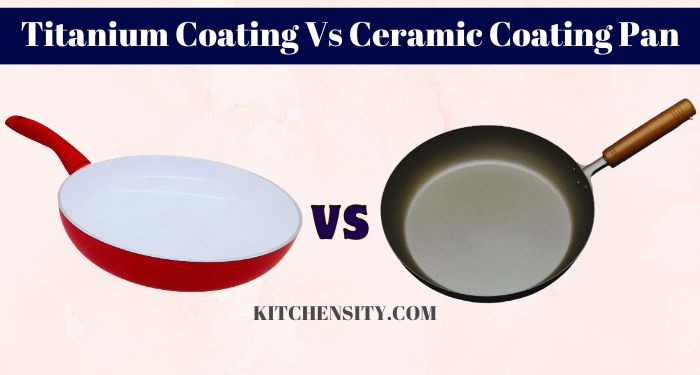
1. Heat Conductivity
- Titanium Coating: Titanium-coated pans offer excellent heat conductivity, ensuring even cooking throughout the pan. The titanium material efficiently transfers heat from the heat source to the food, resulting in consistent cooking results.
- Ceramic Coating: Ceramic-coated pans also provide decent heat conductivity, allowing for relatively even cooking. However, ceramic may not conduct heat as efficiently as titanium, resulting in slightly slower heat distribution.
2. Durability
- Titanium Coating: Titanium-coated pans are known for their exceptional durability. The titanium material is highly resistant to scratches, wear, and tear, making the coating long-lasting and suitable for regular use.
- Ceramic Coating: Ceramic-coated pans are generally durable but can be more prone to chipping or scratching if not handled with care. The ceramic coating requires gentle handling and the use of non-metal utensils to prevent damage.
3. Non-Stick Properties
- Titanium Coating: Titanium-coated pans offer excellent non-stick properties, allowing for easy food release and hassle-free cleaning. The non-stick surface minimizes the need for excessive oil or butter during cooking.
- Ceramic Coating: Ceramic-coated pans also provide a non-stick cooking surface. They allow for easy food release and require minimal oil or fat for cooking. However, the non-stick performance of ceramic coating may gradually diminish over time.
Also Read – Skillet Vs Frying Pan Vs Sauté Pan
4. Safety And Health Concerns
- Titanium Coating: Titanium coating is generally considered safe for cooking. However, it is important to note that the composition of the coating may vary depending on the specific product. Some titanium-coated pans may contain additional materials, so it is advisable to check the manufacturer’s specifications for safety assurances.
- Ceramic Coating: Ceramic coating is known for its non-toxic and eco-friendly nature. It does not contain harmful chemicals like PFOA and PTFE, making it a safer option for cooking. Ceramic-coated pans are a popular choice for health-conscious individuals.
5. Maintenance And Care
- Titanium Coating: Titanium-coated pans are relatively easy to maintain and clean. They can withstand higher heat and are more resistant to scratching. They usually require gentle handwashing with warm soapy water to preserve the coating’s integrity.
- Ceramic Coating: Ceramic-coated pans require specific care and maintenance to prolong their lifespan. They should be cleaned with gentle methods and non-abrasive cleaning tools. Harsh scrubbing or the use of metal utensils can cause the ceramic coating to chip or wear off.
When comparing titanium coating and ceramic coating, it is important to consider factors such as heat conductivity, durability, non-stick properties, safety, maintenance requirements, and personal preferences.
Titanium coating excels in heat conductivity and durability, with excellent non-stick properties, while ceramic coating offers non-toxicity, eco-friendliness, and relatively easier maintenance. Choosing between the two coatings depends on individual needs, cooking preferences, and priorities.
Also Read – Difference Between Hard Anodized Vs Non-Stick Cookware
Comparison Chart – Titanium Coating Vs Ceramic Coating Pan
Here is a comparison chart highlighting the key features of Titanium Coating and Ceramic Coating:
| Features | Titanium Coating | Ceramic Coating |
| Heat Conductivity | Excellent heat conductivity | Decent heat conductivity |
| Durability | Highly durable and scratch-resistant | Durable but prone to chipping or scratching |
| Non-Stick Properties | Excellent non-stick properties | Non-stick properties may diminish over time |
| Safety and Health | The composition may vary, check manufacturer specifications | Non-toxic and eco-friendly |
| Maintenance and Care | Relatively easy to clean and maintain | Requires specific care to prevent chipping or scratching |
| Heat Distribution | Even heat distribution | Even heat distribution, but may be slightly slower |
| Price | Generally more expensive | Varies, but generally affordable |
| Versatility | Compatible with various heat sources | Compatible with various heat sources |
| Aesthetics | Varied designs and colors are available | Varied designs and colors are available |
| High-Heat Usage | Suitable for high-heat cooking | Not suitable for excessive high-heat usage |
| Scratching Resistance | Highly scratch-resistant | Prone to chipping or scratching |
| Availability | Widely available | May have limited availability |
Also Read – Hard-Anodized Vs Ceramic Cookware Comparison
Do Titanium Pans Need To Be Seasoned?
No, titanium pans do not need to be seasoned. Seasoning is a process typically associated with cast iron or carbon steel pans to create a natural non-stick surface. Titanium pans already have a non-stick coating applied to them, so seasoning is not necessary. Titanium coating provides non-stick properties, allowing for easy food release without the need for additional seasoning.
It is important to follow the manufacturer’s instructions for the care and maintenance of your specific titanium-coated pan to ensure its longevity and optimal performance.
Also Read – Stainless Steel Vs Nonstick Vs Ceramic Cookware Set
Which Is Better Titanium Or Ceramic Cookware?
The choice between titanium and ceramic cookware depends on your priorities. If durability and versatility are key, titanium cookware is a better choice due to its ability to withstand high temperatures and resist scratches. However, if non-stick properties and easy cleaning are more important to you, ceramic cookware may be the better option for its non-stick capabilities and variety of styles.
Titanium Cookware
- Advantages:
- Highly durable and scratch-resistant, making it suitable for long-term use.
- Even heat distribution, which can result in better cooking performance.
- Can withstand high temperatures, making it suitable for various cooking methods.
- Considerations:
- May be more expensive compared to ceramic cookware.
- Requires careful cleaning to maintain its non-stick properties.
Ceramic Cookware
- Advantages:
- Excellent non-stick properties, making it easy to cook with and clean.
- Generally safe, as ceramic coatings are free from PTFE and PFOA.
- Lightweight and stylish, with a variety of colors and designs available.
- Considerations:
- May not be as durable as titanium cookware, with a higher risk of chipping or scratching.
- Can be more prone to staining, especially if not cleaned promptly.
Which One Is Better?
- For Durability and Versatility: Titanium cookware is better suited for those who prioritize durability and versatility in their cookware. It can withstand high temperatures and is less prone to damage from scratches or abrasions.
- For Non-stick Properties and Easy Cleaning: Ceramic cookware is better suited for those who prioritize non-stick properties and easy cleaning. It is generally more affordable and comes in a variety of styles and colors.
Ultimately, the “better” choice depends on your specific needs, cooking style, and priorities. Some factors to consider when deciding include the type of dishes you frequently cook, your desired level of non-stick performance, concerns about toxic chemicals, and the overall durability and longevity of the cookware.
It may be helpful to try both titanium and ceramic coatings to determine which one best suits your cooking preferences and yields the desired results in your kitchen.
Also Read – Dutch Oven Vs Roasting Pan
Textured Titanium Vs Ceramic Cookware
When comparing textured titanium and ceramic cookware, the texture of the cooking surface is a significant factor. Textured titanium cookware often features a roughened surface that enhances its non-stick properties and aids in browning and searing, while ceramic cookware typically has a smooth surface for its non-stick capabilities.
Also, textured titanium is known for its durability and even heat distribution, while ceramic cookware, while generally durable, may require more attention to prevent the non-stick coating from deteriorating over time. Both types of cookware have their advantages, and the choice between them depends on individual cooking preferences and needs.
- Texture:
- Textured Titanium: Textured titanium cookware often features a roughened surface that enhances its non-stick properties. This texture can help with browning and searing food.
- Ceramic: Ceramic cookware usually has a smooth surface, which provides its non-stick properties. However, some ceramic pans may have a textured finish for better food release.
- Durability:
- Textured Titanium: Known for its durability, textured titanium cookware is resistant to scratches and abrasions, making it suitable for long-term use.
- Ceramic: While ceramic cookware is generally durable, its non-stick coating may be more prone to chipping or wearing off over time, especially if not properly cared for.
- Heat Distribution:
- Textured Titanium: Offers even heat distribution, which can result in more consistent cooking results.
- Ceramic: Also provides good heat distribution, but may not be as efficient as textured titanium in conducting heat.
- Maintenance:
- Textured Titanium: Requires careful cleaning to maintain its textured surface and non-stick properties.
- Ceramic: Generally easy to clean, but may require more attention to prevent the non-stick coating from deteriorating.
Comparison Table:
| Feature | Textured Titanium Cookware | Ceramic Cookware |
| Texture | Roughened surface for enhanced non-stick properties | Smooth surface for non-stick properties |
| Durability | Highly durable, resistant to scratches | Durable, but the coating may wear off |
| Heat Distribution | Even heat distribution | Good heat distribution |
| Maintenance | Requires careful cleaning | Generally easy to clean |
Also Read – Carbon Steel Vs Anodized Aluminum Cookware
Titanium Vs Mineralia Coating
When comparing titanium and Mineralia coatings in cookware, there are several key differences to consider:
Titanium Coating
- Composition: Titanium coatings are typically made with a layer of titanium-based material applied to the surface of the cookware.
- Properties: Titanium coatings are known for their durability, scratch resistance, and even heat distribution. They are often favored for their ability to withstand high temperatures and long-term use.
- Advantages: Highly durable, scratch-resistant, and suitable for various cooking methods, including high-temperature cooking.
Mineralia Coating
- Composition: Mineralia coatings are made with a blend of mineral particles that are applied to the surface of the cookware.
- Properties: Mineralia coatings are known for their natural non-stick properties, which are achieved without the use of synthetic materials like PTFE or PFOA. They are often chosen for their eco-friendly and non-toxic nature.
- Advantages: Natural non-stick properties, eco-friendly composition, and a non-toxic cooking surface.
Comparison
- Durability: Titanium coatings are generally more durable and scratch-resistant compared to Mineralia coatings.
- Non-stick Properties: While both coatings offer non-stick properties, Mineralia coatings are known for their natural non-stick capabilities, while titanium coatings may require additional non-stick treatment.
- Heat Resistance: Titanium coatings are better suited for high-temperature cooking, while Mineralia coatings may have limitations in this regard.
So, titanium coatings are valued for their durability and heat resistance, making them suitable for various cooking methods, especially those involving high temperatures. On the other hand, Mineralia coatings are prized for their natural non-stick properties and eco-friendly composition. The choice between the two coatings depends on individual preferences for durability, non-stick performance, and cooking style.
Also Read – Shiny Metal Pan Vs Dark Nonstick Pan
Is Ceramic Coating Safe?
Ceramic coatings are considered safe for use in cookware. Unlike some traditional non-stick coatings that may contain PTFE or PFOA, ceramic coatings are typically free from these chemicals. This makes them a popular choice for those seeking non-stick cookware without the potential health concerns associated with traditional non-stick coatings.
However, it’s important to note that the safety of ceramic coatings can vary depending on the specific brand and manufacturing process. Some lower-quality ceramic coatings may contain additives or impurities that could potentially be harmful if they leach into food at high temperatures or if the coating becomes damaged.
To ensure the safety of ceramic-coated cookware, it’s advisable to:
- Choose reputable brands known for high-quality ceramic coatings.
- Follow the manufacturer’s instructions for use and care to maintain the integrity of the coating.
- Avoid using metal utensils that could scratch or damage the ceramic coating, which may lead to potential safety issues.
Overall, when used and maintained correctly, ceramic-coated cookware is considered a safe option for cooking.
Also Read – Baguette Pan Vs Baking Stone
Are Titanium Pans Safe?
Titanium pans are considered safe for cooking. Pure titanium is a non-toxic and biocompatible metal that does not react with food, making it a popular choice for cookware. When used in cookware, titanium is often combined with other materials or coatings to enhance its properties.
However, it’s essential to note that the safety of titanium pans can depend on several factors, including their construction and any additional coatings or materials used in their production. Some titanium pans may feature non-stick coatings or other additives that could potentially affect their safety if they are not of high quality or if they are damaged.
To ensure the safety of titanium pans:
- Choose high-quality titanium pans from reputable manufacturers known for their safe and reliable products.
- Follow the manufacturer’s instructions for use and care to maintain the integrity of the pan and any coatings.
- Avoid using metal utensils that could scratch or damage the pan’s surface, potentially compromising its safety.
When used properly and maintained according to the manufacturer’s guidelines, titanium pans are generally considered safe and can offer excellent durability and cooking performance.
Also Read – Tube Pan Vs Bundt Pan
Final Thoughts: Titanium Coating Vs Ceramic Coating Pans
So, when it comes to choosing between titanium coating and ceramic coating pans, both options have their unique advantages and limitations.
Titanium coating offers exceptional heat conductivity, durability, and excellent non-stick properties, making it a popular choice for many cooks. On the other hand, the ceramic coating provides a non-toxic and eco-friendly option with good heat retention and versatility.
Consider your cooking preferences, budget, and specific needs when making a decision. If you prioritize heat conductivity, durability, and long-lasting non-stick properties, titanium-coated pans may be the ideal choice for you. However, if you value non-toxicity, eco-friendliness, and ease of maintenance, ceramic-coated pans may better suit your requirements.
Remember to handle both types of pans with care, following the manufacturer’s instructions for cleaning and maintenance to prolong their lifespan. Whether you opt for titanium coating or ceramic coating, investing in high-quality cookware will enhance your cooking experience and contribute to delicious meals in the kitchen.
Ultimately, the choice between titanium coating and ceramic coating pans is a matter of personal preference. Consider your cooking style, and desired features, and prioritize what matters most to you to select the cookware that best aligns with your needs and enhances your culinary journey.
Also Read – Shallow Vs Deep Baking Pans
Frequently Asked Questions (FAQs)
-
Why Use Titanium Instead Of Stainless Steel?
Titanium offers better heat conductivity and durability compared to stainless steel, making it suitable for precise temperature control and long-lasting performance in cookware.
-
Are Titanium-Coated Pans Completely Scratch-Resistant?
While titanium coating is highly scratch-resistant, it is not entirely immune to scratches. It is recommended to use utensils made of non-metal materials to prolong the life of the coating.
-
Can Ceramic-Coated Pans Be Used On Induction Cooktops?
Yes, many ceramic-coated pans are compatible with induction cooktops. However, it is essential to check the manufacturer’s instructions for compatibility.
-
How Should I Clean A Titanium-Coated Pan?
Titanium-coated pans can be cleaned with warm soapy water and a soft sponge or cloth. Avoid using abrasive cleaners or metal scrubbers that may damage the coating.
-
Can Ceramic-Coated Pans Handle High-Heat Cooking?
While ceramic-coated pans are suitable for most cooking methods, including medium to high-heat cooking, excessive heat can cause the coating to degrade over time. It is best to follow the manufacturer’s guidelines for optimal usage.
-
Difference Between Titanium And Ceramic
The main difference between titanium and ceramic cookware lies in their composition and properties. Titanium cookware is made with a layer of titanium-based material known for its durability and scratch resistance, making it suitable for high-temperature cooking and long-term use. In contrast, ceramic cookware is coated with a ceramic-based material prized for its non-stick properties, ease of cleaning, and absence of potentially harmful chemicals like PTFE or PFOA.
Katrina Smith is a seasoned expert with over 25 years of experience in all things related to cooking and the kitchen. As an avid cook and kitchen enthusiast, she is passionate about sharing her knowledge and expertise on cookware, kitchen appliances, kitchen tips, and kitchen staples.
Through her articles and reviews, Katrina aims to inspire and help others improve their cooking skills, experiment with different ingredients, and invest in quality cookware and appliances.

![How To Season And Clean Cast Iron Cookware? [4 Effective Ways] 6 How To Season And Clean Cast Iron Cookware](https://www.kitchensity.com/wp-content/uploads/2020/06/How-To-Season-And-Clean-Cast-Iron-Cookware.jpg)
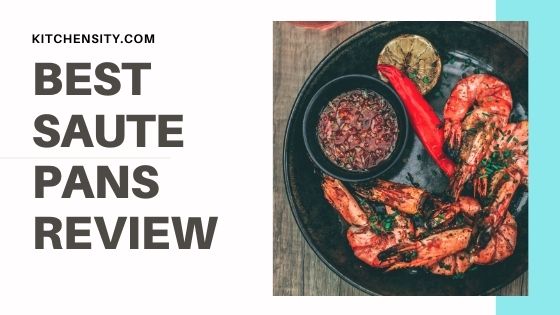
![Stainless Steel Vs Nonstick Vs Ceramic Cookware Set [An Ultimate Guide 2023] 8 Stainless Steel vs Nonstick vs Ceramic Cookware Set](https://www.kitchensity.com/wp-content/uploads/2019/09/Stainless-Steel-vs-Ceramic-vs-Nonstick-Cookware-Sets-e1621083482728.jpg)
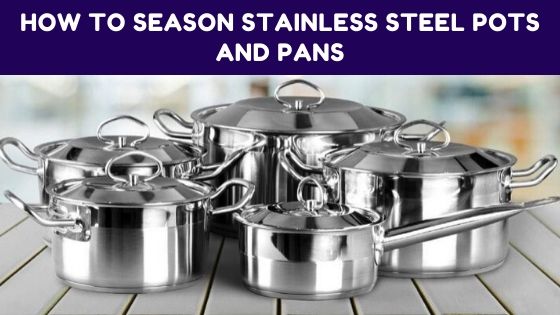
![What Pans Can You Use Cooking Spray On? [Ultimate Guide] 10 Types of pans with which cooking spray can be used](https://www.kitchensity.com/wp-content/uploads/2023/02/What-Pans-Can-You-Use-Cooking-Spray-On.jpg)
